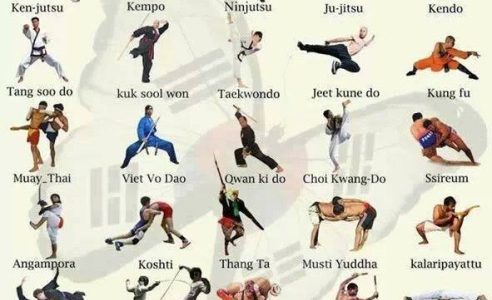Exploring The Differences Between Traditional Martial Arts And Contemporary Fight Sports
Exploring The Differences Between Traditional Martial Arts And Contemporary Fight Sports
Blog Article
Article Created By-Keith Burch
When you think of martial arts, do you lean much more towards the standard practices or the contemporary battle sports? Each course provides one-of-a-kind benefits and experiences, shaped by their ideologies and training approaches. Standard martial arts highlight individual growth and self-control, while modern battle sporting activities focus on competitors and efficiency. Understanding these distinctions can guide you in picking the appropriate technique for your trip. However how do these differences manifest in training and approach?
The Approach and History Behind Typical Martial arts
While lots of people link martial arts with physical fight, the viewpoint and history behind traditional martial arts run much deeper. why not try these out 'll find that these techniques highlight personal growth, self-control, and regard.
Stemming from ancient techniques, conventional martial arts were commonly created for Self-Defense and spiritual growth. They embody concepts such as balance, harmony, and self-discipline, directing specialists beyond plain combating abilities.
As you train, you'll not only find out strategies however also get insights into the society and values that formed these arts. The routines and traditions, often given with generations, foster a feeling of neighborhood and belonging.
The Affordable Nature of Modern Fight Sports
Modern combat sports have actually changed the landscape of martial arts into an extremely affordable field, where professional athletes face off in a test of ability, method, and endurance.
You'll discover that competitions are commonly organized with strict policies and policies, making certain justice and security. These events bring in huge target markets, sustaining the excitement and strength of competitions.
Professional athletes train rigorously, not just for physical prowess yet likewise for psychological sturdiness, knowing that every detail counts in the ring. The adrenaline rush throughout competitions is palpable, as competitors press their restrictions to claim victory.
Fans appreciate the athleticism and artistry entailed, making modern-day combat sporting activities a thrilling phenomenon that remains to develop and mesmerize fanatics all over the world.
Training Approaches and Methods: A Comparative Evaluation
The affordable atmosphere of modern fight sporting activities demands innovative training methods that vary significantly from typical martial arts.
In contemporary training, you'll focus on details methods, competing, and conditioning, commonly using drills that simulate actual fight scenarios. You'll see an emphasis on quantifiable performance and regular competitors to assess your abilities.
On the other hand, typical martial arts focus on forms, katas, and thoughtful teachings, commonly emphasizing technique and regard over competitors.
https://www.nytimes.com/2023/07/01/technology/elon-musk-mark-zuckerberg-cage-match.html is generally less intense and may entail repeated method instead of real-time sparring.
While both techniques construct ability and physical fitness, contemporary battle sporting activities offer an extra dynamic and adaptable training environment, preparing you for prompt challenges in the ring or cage.
Pick the course that straightens with your objectives and rate of interests.
Verdict
In picking in between standard martial arts and modern-day combat sports, it truly boils down to what you value most. If you're looking for individual development, discipline, and a sense of area, conventional arts might be your finest fit. But if you grow on competitors and real-time challenges, modern battle sports could be the means to go. Inevitably, both paths use unique advantages, so it's everything about aligning your training with your personal objectives and rate of interests.
